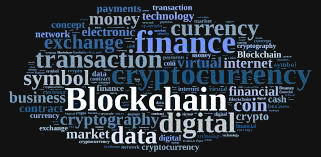





Published on Feb 21, 2020
Maker is a decentralized autonomous organization on the Ethereum blockchain seeking to minimize the price volatility of its own stable token — the Dai — against the U.S. Dollar.
In contrast to Dai which is a stablecoin that is suitable for payments and savings, MKR is a token that has a volatile price because of its unique supply mechanics and role on the Maker platform. MKR is a utility token, governance token and recapitalization resource of the Maker system.
There exists 1,000,000 MKR in total at the launch of Dai, with 530,000 MKR in market circulation and as of November 5th 2017 470,000 MKR still remaining in the development fund.
As a utility token, MKR is required for paying the fees accrued on CDPs that have been used to generate Dai in the Maker system. Only MKR can pay these fees, and when paid the MKR is burned, removing it from the supply. This means that if the adoption and demand for Dai and CDPs increases, there will be additional demand for MKR so users can pay the fees. It also means the supply will decrease as MKR is burned.
As a governance token, MKR is used by MKR holders to vote for the risk management and business logic of the Maker system. Risk management is crucial for the systems success and survival, and is done in practice by voting on specific risk parameters for each collateral asset and CDP type. The risk parameters need to be set rigorously to correspond to the risk profile of the collateral assets used by the CDPs in the system, and determine factors such as how much extra collateral is required for generating Dai with the collateral asset, or how much Dai can be backed in total by a specific collateral asset.
The voting process for the governance of the system is done through continuous approval voting. This means every MKR holder can vote for any number of proposals with the MKR he holds, and can submit a new proposal, or cast or withdraw his votes at any point in time. The proposal that has the most votes from all MKR holders becomes the “top proposal” and can be activated to implement changes to the risk parameters of the system. There is a security delay after the proposal is activated, before its changes are implemented, in order to give the community enough time to react and prevent malicious proposals from damaging the system.
The initial governance framework for Dai risk management will be using the Sunday meetings to spread awareness around new proposals, and coordinate votes. Based on the experience learned in governing Dai we will work together in the community to come up with a holistic framework for future governance of the scale that the system will need in the long run. There will be a simple dapp available that allows any MKR holder to easily vote with their MKR by using metamask, mist or parity. More advanced features are planned for the future, such as delegating your votes to a proxy voter, and the ability to safely vote with MKR held in cold storage.
If MKR holders are highly competent and govern the system well, CDPs will always remain overcollateralized and there will be no threat of insolvency to the system. However mistakes or unforeseen circumstances can happen, and as a result it is possible that parts of the collateral portfolio becomes undercollateralized. When this happens the last function of the MKR token is triggered: automatic recapitalization through forced MKR dilution. This means that the Maker system automatically creates new MKR tokens and sells them on the market, instantly raising money to recapitalize the shortfall of value in the system and bring it back from insolvency. This means that MKR holders are held directly accountable for their actions, since bad governance will result in their tokens becoming diluted.